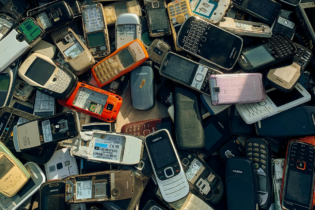Power transmission technology has faced great evolution over the decades, however innovation is creating a global e-waste crisis. When electronics are disposed, they end up in landfills around the world. This spreads toxins and chemicals throughout nearby communities, infecting people, food, and waterways.
Wireless power technology could help reduce e-waste production. Electronic waste often contains lead and other toxic metals. When burnt the toxins are released into the air, where they contribute to greenhouse gas emissions. People working in electronic waste landfills must get hands-on with these toxins, amplifying risks even further. Developing these wireless power technologies is crucial to combatting e-waste proliferation. Electronic waste is detrimental to the environment as well as public health. The World Health Organization has identified electronic waste as a critical health hazard to millions of children across the world. The side effects of exposure include respiratory harm, impaired neurological function, chronic diseases, and DNA damage. E-cycling is a crucial in the electronic waste. But, to maximize its effectiveness in the long term relies on developing technology that doesn’t need to be thrown away to begin with. Widespread use of wireless power could create infrastructure compatible with numerous devices and built to last.Electric vehicles are considered a cornerstone of the sustainable future. Wireless charging could be the key to success in initiatives like this. These stations could be universally compatible with all next-generation electric vehicles.
A wireless power grid could not too far in the future. The infrastructure for 5G is already expanding. The same cell towers could be used for internet access and small device charging. Electronic waste could be significantly reduced if wireless charging became the universal standard. Users would no longer need different chargers for all their devices, diminishing the production of endless cables and charging blocks. Additionally, wireless charging removes the need for any open ports on devices. Phones, tablets and other consumer electronics could become much more waterproof and durable. This would lead to fewer devices being thrown away due to damage. Even if users still want to buy a new phone every one or two years, resale and donation value for old devices will remain high since they are so durable. Building up wireless power infrastructure is about more than convenience. Cutting back on cords, batteries, and charging accessories could drastically reduce global electronic waste production. As a result, the electronics of tomorrow will be sustainably made and powered.







